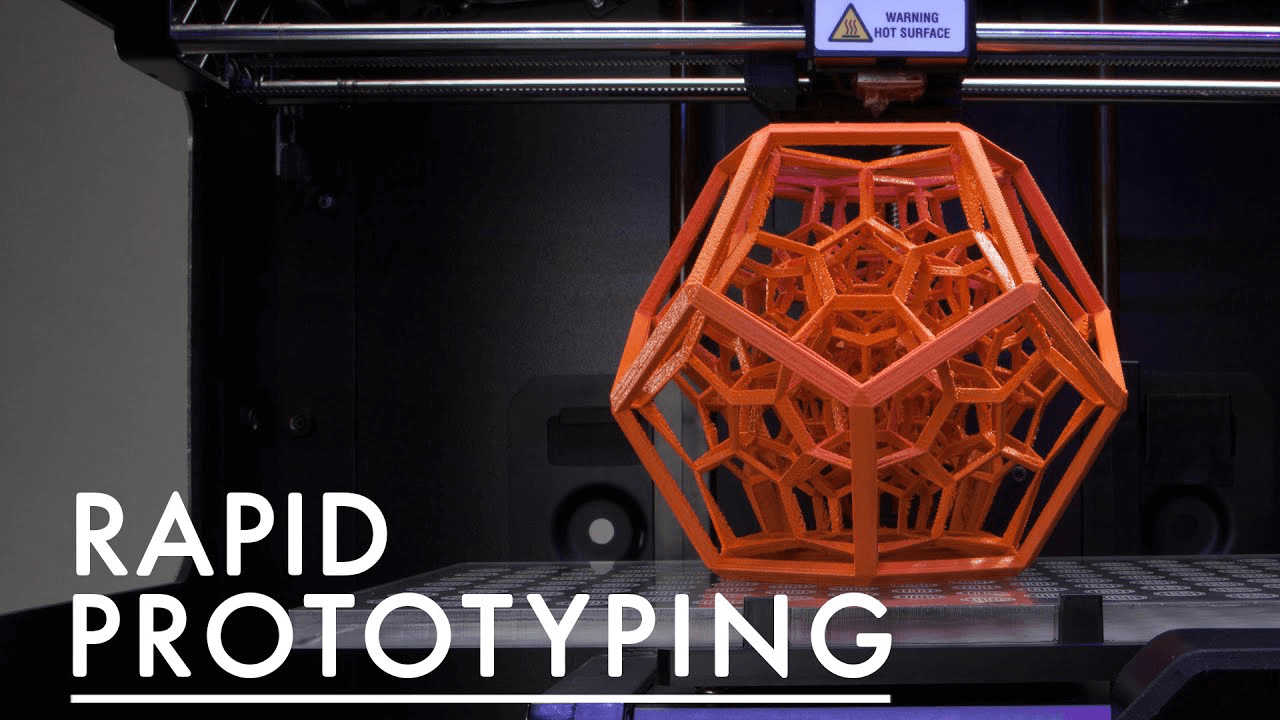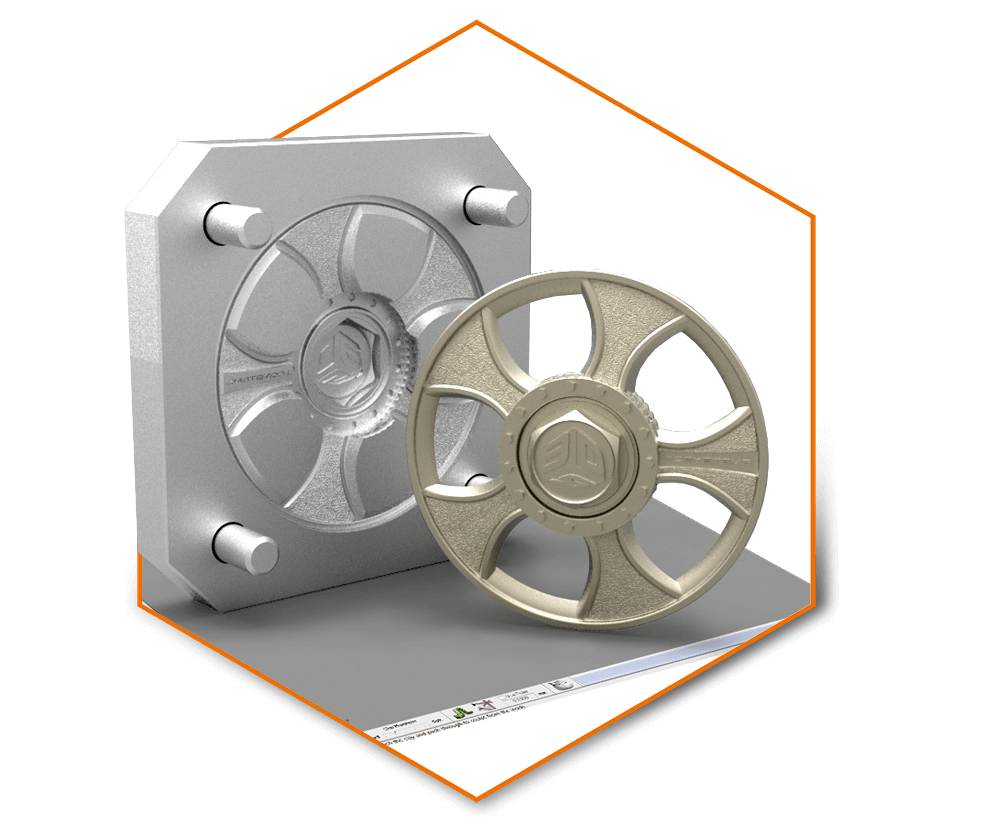5 Factors for Choosing Professional Rapid Prototyping Method in 2020
2020-06-07Professional Rapid Prototyping: 5 Technique Selection Factors
A professional rapid prototyping manufacturer fully comprehends the fact that the failure or success of the prototype greatly depends upon the selection of prototyping techniques. When it comes to rapid prototyping, you have several ways to make up the product design.
You can either go with the simple cardboard mock-ups or the full functional machine assembled product. For modern-day products, prototyping has become imperative. This is crucial for new product development.
Rapid prototyping offers the facility to validate your design. It provides you with a rough model, thus allowing you to test its functionality. Moreover, you would get a précised idea of how your product would look, feel, and work in a real-time environment.
In this blog post, we are going to talk about part-base prototypes. In simpler words, we will tell you how you can use individual parts to create a system-level prototype.
Five Key Factors for Professional Rapid Prototyping Process
Since every product is unique, thus it will offer unique prototyping experience. The difference in every product, project, and product design elements, needs proper consideration.
A certain prototype that worked well for an XYZ product, might not generate the same effective results of your product. Therefore, you need to consider the five key factors below to make the right decision.
- Purpose
- Quality
- Quantity
- Complexity
- Cost
Let’s look deep into these factors and understand why they are important for choosing your next prototyping process.
Purpose
According to Ulrich and Eppinger, there are four reasons for creating a prototype within the engineering and development of product design as well as the product. These four reasons include communication, learning, milestones, and integration.
Die doel van prototipering wissel na gelang van die ontwikkelingsfase van die produk. Oor die algemeen is daar vier verskillende produkontwikkelingsfases. Elke stadium van produkontwikkeling het sy eie funksies, asook die funksies wat benodig word om enige vorm van risiko's uit te skakel.
Dit sal die getrouheidstipe van die prototipe, naamlik low-fidelity of high-fidelity, weggee. Die eerste aspek van die doel van die projek se prototipe sal afhang van die risikobeperkingsoefeninge of die beplande toetse.
Byvoorbeeld, terugvoer van kliënte-interaksie, of soorte toets, ens. As die prototipe noukeurig gaan toets, is dit belangrik om op die materiaal te fokus. Die materiaal sou per slot van rekening 'n beslissende faktor wees in die keuse van 'n vinnige prototiperingstegniek.
Vervolgens moet u fokus op die funksionele aspek van die prototipe. Die keuse en samestelling hang baie af van die funksionele verwagtinge van die prototipe. Soos, wil u hê dat 'n bewegende deel van u plan funksionele toetse moet uitvoer?
Dit is baie minder waarskynlik dat u prototipe suksesvol word sonder enige aanpassings. U moet dus die veranderinge en wysigingsfaktore in u gedagtes in ag neem. Dit is belangrik om te oorweeg hoe maklik of moeilik dit sou wees om die prototipe te verander.
As u dit doen, sal dit ook help om die regte prototiperingstegniek te bepaal.
Die produkontwikkelingsstate
Taak vir produkopklaring en beplanning
Dit is die stadium waar u vroeë bewys van konsepte moet lewer. Gebruik prototipes, demonstrasies of mock-ups vir industriële ontwerp.
Prototiperingstegniek
- 3D-gedrukte onderdele
- Carboard Mockups
- CNC-bewerkte skuimmodelle
- Assemblies (SLS, SLA, FDM, etc)
Conceptual Design
At the conceptual stage, you generally require scaled parts. In some cases, you would need assemblies of the design as well as limited functionality and user interface.
To get the shape, and feel of the product, you can use the FDM part. In case, you want more accuracy, you would have to move to the next level of 3D printing. Either choose the SLS, or go with the SLA. You also have the option of poly jet parts.
In case, you want metal parts, then using CNC machine at this stage would be an excellent thing to do. Furthermore, you can even consider sheet metal fabrication. However, sheet metal fabrication works in limited situations.
Embodiment Design
In this phase, you would be exploring the full functionality of the prototype. A professional rapid prototyping manufacturer would be looking into its fit, form, and functions. Therefore, focusing on details is imperative. At this stage, the prototypes would be as similar to the final product as possible.
They would be containing several parts. Also, the testing phase expands here. You cannot limit your self to just a single testing technique. On the contrary, you would be needing different units for different testing purposes.
You would also be considering the final technique for manufacturing at this stage. The reason being, you would have to stimulate it eventually. Also, focus on high-resolution printing such as SLA and SLS for plastic parts.
Paying heed to vacuum casting is also important. Both the DMLS and SLM parts are perfect for simulating casting parts.
Detailed Design
Any prototype developed in this phase would go for functional testing. Moreover, it would be used for pre-production pilot runs.
Professional rapid prototyping manufacture would use vacuum casting to prototype injection molding parts. In the case of machined plastic parts, they would be using the 3D printing technique.
Quality
As we mentioned above, the product accuracy and fidelity required would dictate the type of post-processing or process, you would need for the prototype. You need to focus on the quality of your prototype as well.
Although, high-fidelity prototypes are expensive, however, professional rapid prototyping manufacture consider them as a return on investment. For instance, you want to have a thread feature, we recommend using SLA in instead of the FDM. Unfortunately, SLA would cost you more.
Prototype Usage
The type of technology you use would also depend upon prototype usage. For example, if you plan to use the parts frequently, you should not consider self-tapping holes or 3D printed threaded holes. On the contrary, it would be used to opt for the metal inserts or machined inserts.
Material Selection
The quality of the prototype greatly depends upon the raw material. So, you need to pay close heed to the material selection aspect of the development phase. We would not recommend additive manufactured parts, especially when there is a link between the certain material properties and the functional elements of the prototype.
See the table below for the basic material choice for different manufacturing techniques.
| 3D-drukwerk | CNC | Vakuum giet |
|
TPU, ASA, ULTEM, ABS, PLA, Nylon |
PEEK, Polycarbonate, Nylon, ABS | Nylon HT, ABS
ABS, Nylon Nylon HT |
| Inconel, Titanium, Stainless Steel, Aluminum | Brass, Titanium, Stainless Steel, Aluminum | N/A |
It is important to consider the tolerance of prototypes parts especially when a certain prototype compromise of more than one. Tolerance consideration will also offer ease of integration.
Quantity
Another important factor that plays a vital role in deciding the type of prototyping technology is quantity. There are certain techniques that would be cost-effective for smaller quantities and vice versa.
See the following rules that apply.
Plastic Parts
| Prototype processes | |||
| Plastic parts | Quantity | ||
| Low (1's) | Medium (10's) | ||
| Size | Large | 3D-drukwerk | CNC Machining
Vacuum Casting |
| Small | 3D-drukwerk | CNC machining (simple) 3D printing (complicated) |
|
Metallic parts
| Prototype processes | |||
| Metallic Parts | Quantity | ||
| Low (1's) | Medium (10's) | ||
| Size | Large | CNC-bewerking | CNC-bewerking |
| Small | 3D Printing
CNC-bewerking |
Investment Casting
CNC-bewerking |
|
Complexity
The complexity of the product would help aid the rapid prototype process selection process. Different processes offer different complexity. You just need to focus on the one that would suit your prototype requirement.
Cost
Laastens moet u fokus op die beskikbare bronne. Die prototipe en die hulpbronne gaan immers hand aan hand. U moet rekening hou met die werksure, die geld en die tyd wat u benodig om 'n prototipe van hoë gehalte te skep.
As u op hierdie aspekte fokus, kan u ook die regte prototiperingstegniek kies.
Neem weg
As 'n professionele vervaardiger van vinnige prototipes, fokus ons baie op bogenoemde 5 sleutelfaktore. Ons verstaan ten volle dat die keuse van die regte prototiperingstegniek resultate van hoë gehalte sal oplewer. Daarom let ons baie op die doel van u prototipe.
Daarbenewens sal ons aandag gee aan die kwaliteit, veral as dit in 'n real-time omgewing uitgevoer moet word. Ons moderne tegnologie help ons met die hantering van prototipes van alle groottes en vorms.
Ons het die vermoë om lae-volume prototipering sowel as massaproduksie te hanteer sonder om enige verskil ten opsigte van kwaliteit en perfeksie te hê. Wat meer is: ons kies die prototiperingstegniek met inagneming van die koste en die kompleksiteit van u ontwerp.
Per slot van rekening kan elke tegniek nie hoë, gesofistikeerde en komplekse ontwerpe lewer nie. kom.






